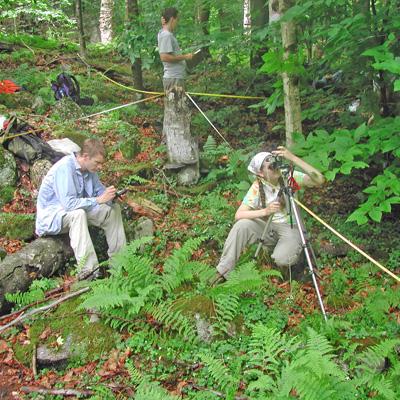The Effects of an Introduced Pest and Geological Substrate on Carbon and Nitrogen Dynamics in a Northern Hardwood Forest

Beech bark disease is a serious disease affecting American beech throughout the Northeast. In some areas, the slow decline of beech due to this disease has led to shifts in tree species dominance in favor of competing tree species, but in other areas, beech reproduces well and small beech stems dominate. NSRC researchers studied the Catskill Mountains of New York and the White Mountains of New Hampshire to assess changes in forest composition and the consequences for soil carbon and nitrogen cycling.
Researchers located 180 stands in the Catskills and 111 stands in the White Mountains where a canopy beech tree had died and the canopy gap had subsequently been filled. They measured which species filled the gap, the vegetation within and surrounding the plot, and the chemistry of the soil in the plot.
Researchers found that the impact of this disease depended in part on soil calcium availability. In areas with higher soil calcium availability, sugar maple was more likely to take over gaps left by dying beech, while in areas with lower calcium, beech was more likely to replace itself in the canopy. The change in dominance of the stand from beech to sugar maple was associated with soil changes including a reduced forest floor mass, lower carbon to nitrogen ratio in the forest floor, and higher nitrate concentrations in the soil. This research improves the understanding of how species composition in northern hardwood forests is changing as a result of beech bark disease and how expected changes may vary from one location to another.
